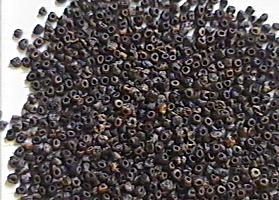
| Return to Species cover Page | Return to Home Page | Return to European Species List |
This delphinium originates from the Balkan region of Europe and is notable for being an annual not a perennial.

Inspection of seeds obtained from the Alpine Garden Society showed that they differ from those of perennial garden delphiniums in being both small (1mm diameter) and covered with scales, like miniature pine cones. An unusual feature is a circular depression in one end of the seed that is clearly seen in the picture of seeds collected from the plants raised.
Seeds sown in late January were left outdoors, exposed to the weather. Germination occurred during March and by late April the seedlings had three or more true leaves. The leaves are unusual in that the blade extends along the stalk as a wing tapering towards the base. Three seedlings were planted out into the garden.
The plants next develop a slender stalk with larger and more divided leaves. As soon as a flower spike develops at the top of the stem, side shoots develop in the leaf axils.
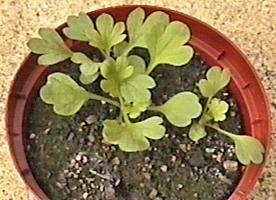 |
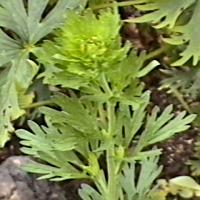 |
The first flowers of the terminal raceme opened in early August. The small florets are approximately 15mm across with a spur 12mm long. The flowers differ considerably in appearance from those of cultivated perennial delphiniums. It is difficult to decide by looking at the pictures here which blue bracts are the five sepals and which are the petals (honey leaves). Pollination of a flower results in the development of seeds in a cluster of three carpels 8 - 10mm long that are thickly covered with hairs. This is a feature that places the plant in the genus Delphinium and separates it from those species of annual larkspur that are classified in the genus Consolida, which have only a single carpel.
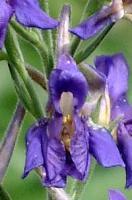 |
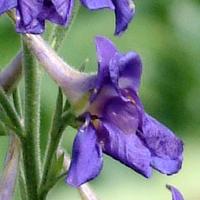 |
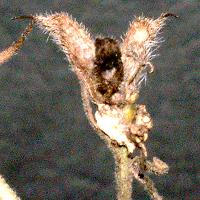 |
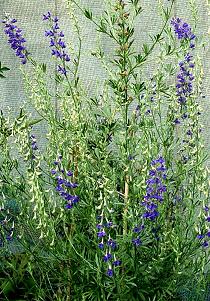 The plants flowered from early August through to late
September becoming steadily more and more branched with spikes of
flowers on many side shoots. Side shoots even grew out from the
leaf joint at the base of the pedicels of the florets in the
initial terminal raceme. The largest plant ultimately grew to 80
cm tall with a lateral spread of 60 cm.
The plants flowered from early August through to late
September becoming steadily more and more branched with spikes of
flowers on many side shoots. Side shoots even grew out from the
leaf joint at the base of the pedicels of the florets in the
initial terminal raceme. The largest plant ultimately grew to 80
cm tall with a lateral spread of 60 cm.
This delphinium is similar in many respects to the plants raised from the seed distributed by Suttons Seeds under the name 'Rhapsody in Blue', which was identified as a Turkish species, D. venulosum. Unfortunately my photographic records of those plants are not adequate to establish in what way the plants differ, although the plants of D. balcanicum seemed to have flowers in longer racemes rather than small clusters. The only solution is to grow plants of both and to make a detailed comparison.
| Return to Species cover Page | Return to Home Page | Return to European Species List |